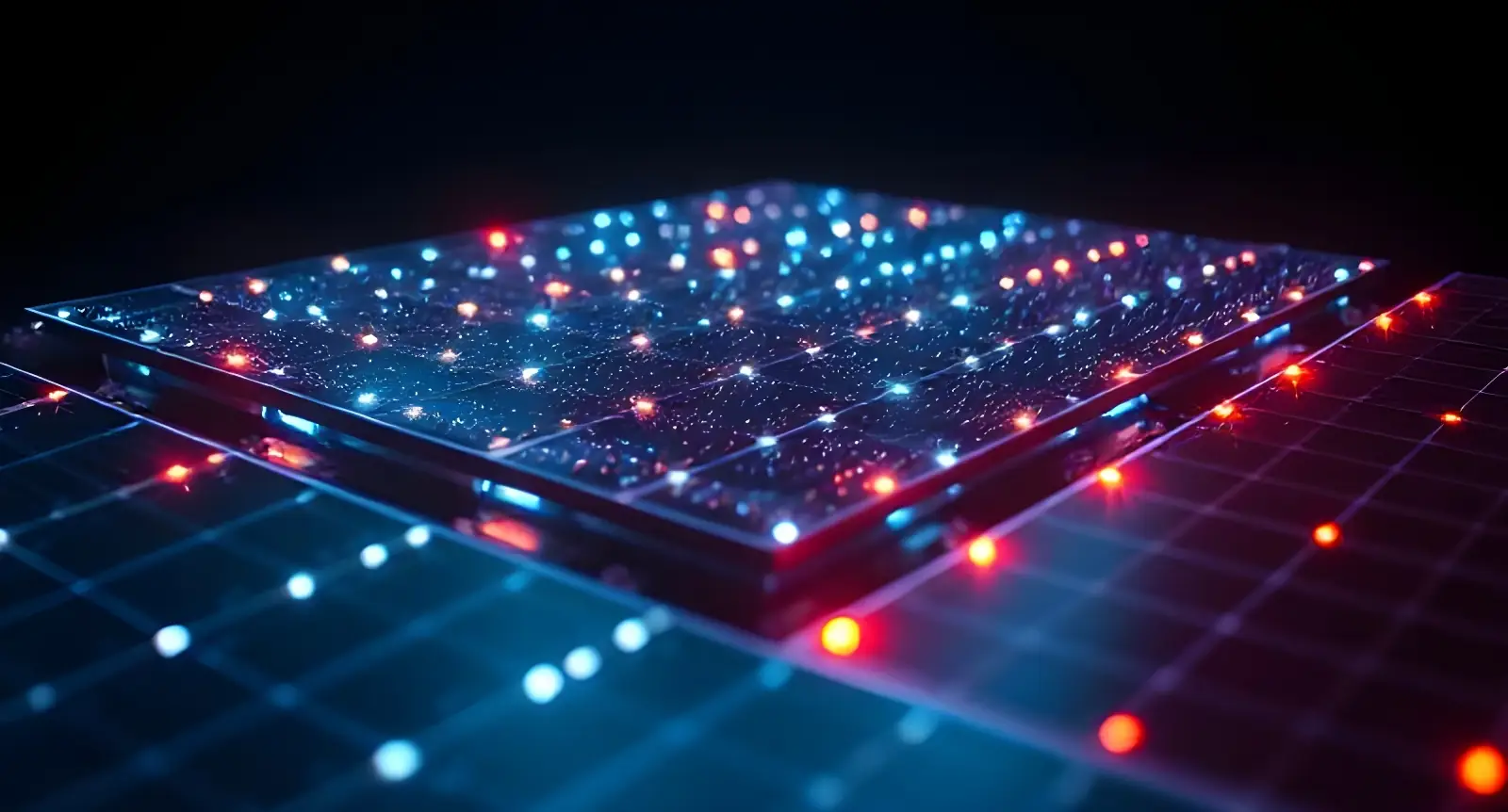
Solar Panel Passive Cooling Technology: Enhancing Solar Efficiency and Lifespan
A novel acrylate-based composite material has been developed by an international team lead by Saudi Arabia’s King Abdullah University of Science and Technology (KAUST).
The substance absorbs moisture at night and releases it during the day, considerably increasing solar panel power output and lifespan. When applied to solar cells in Saudi Arabia over several weeks, the material enhanced power production and longevity while using less electricity.
The study discovered that the material was 9.4°C cooler than those without it, increased power output by more than 12%, and prolonged their lifespan by more than 200%.
The Science Behind Solar Panel Passive Cooling Technology
A international group of scientists, under the direction of King Abdullah University of Science and Technology (KAUST) in Saudi Arabia, has created a novel composite material based on acrylate that enhances solar cell performance.
Solar Panel Passive Cooling Technology: Enhancing Solar Efficiency and Lifespan
A novel composite material passively cools solar panels, increasing their lifespan by more than 200% and increasing power output by 12.9%.
The substance significantly increased power production and lifespan while consuming less electricity when used in solar cells that were operating in Saudi Arabia for a few weeks. The journal Materials Science and Engineering published the results.
More than three-quarters of all renewable energy installations are solar cells, making solar energy a major emphasis for green economies worldwide. However, there are many obstacles in the way of providing dependable and durable solar electricity.
Only around 20% of sunlight is converted into energy by commercial solar panels; the remainder is either deflected or absorbed as heat.” This heat reduces the panels’ lifespan and function, necessitating an earlier replacement.
Because of this, cooling is crucial, but conventional systems like fans and pumps need power. An alternative that uses no energy is passive cooling.
“Passive cooling-enabling materials are our specialty. According to KAUST Professor Qiaoqiang Gan, who supervised the study, “these materials are thin and may be placed over many systems that require cooling to operate, such greenhouses and solar cells, without harming performance.”
The Science Behind Solar Panel Passive Cooling Technology
In the current work, Gan and his colleagues created a hygroscopic composite using sodium polyacrylate and lithium chloride, which was carried out through the KAUST Center of Excellence for Renewable Energy and Storage Technologies.
During the day, this substance releases the moisture it has absorbed from the atmosphere during night. Unlike other hygroscopic polymers used for cooling, polyacrylate is a cheap polymer and can be made without the use of hazardous chemicals or specialist reagents. As a result, the composite is more economical.
Field Test Results: Solar Panel Passive Cooling Technology in Action
Solar cells with this substance attached to them were 9.4°C cooler than those without the novel compound over weeks of operation in the Saudi desert.
Additionally, they demonstrated a more than 12% increase in power output and a more than 200% longevity, all while lowering their electricity generation costs by around 20%.
To show that passive cooling technology is effective in any setting, research was done not just in Saudi Arabia but also in some of the coolest regions of the United States mainland during rainy seasons.
Gan used solar cells supplied by KAUST Professor Stefaan De Wolf to test the composite material. With their tailored designs, De Wolf’s research team has consistently set world records for solar cell performance.
“This project is a great illustration of KAUST integrating several areas of expertise. We put the novel cooling system to the test on high-performing solar cells in a variety of settings, and we always got great results,” De Wolf added.
Reference: “Streamlined fabrication of an inexpensive hygroscopic composite for low maintenance evaporative cooling of solar panels”.
By Huangyu Fang, Saichao Dang, Prasanth Kumar, Jiake Wang, Lujia Xu, Yingkun Zhu, Abdullah Almogbel, Abdulrahman Albadri, Stefaan De Wolf and Qiaoqiang Gan, 16 May 2025, Materials Science and Engineering: R: Reports.